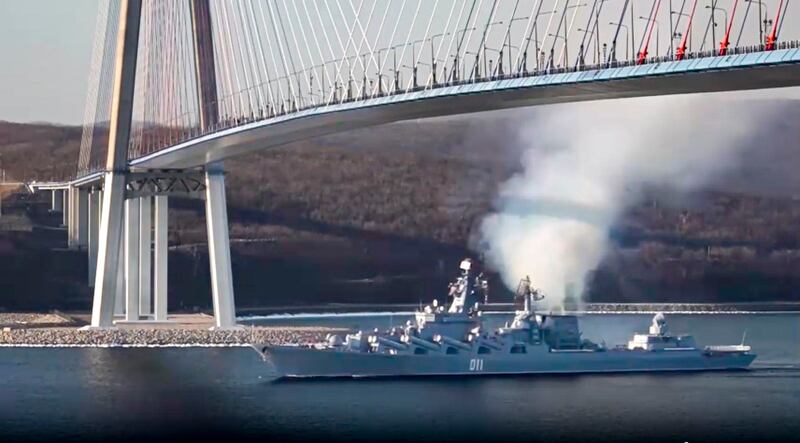A Russian Pacific Fleet warship has conducted an anti-submarine exercise in the South China Sea as part of the fleet’s training program, Russia’s ministry of defense confirmed in a news release.
The Marshal Shaposhnikov, assisted by a Ka-27 helicopter, was searching for an “enemy” submarine at an undisclosed location in the South China Sea before firing torpedoes and anti-submarine depth charges at it, according to the ministry.
The firing was conducted entirely in “a training manner” and did not use the frigate’s actual weapons, the ministry said.
Frigate Marshal Shaposhnikov, together with the Pacific Fleet’s flagship missile cruiser Varyag, is on a long-distance training mission to the Asia-Pacific.
The ships left the fleet’s home base in Vladivostok in Russia’s Far East on Jan. 22 and, besides training exercises, planned to make some port calls. The news release did not reveal the length of the mission or the countries the ship detachment plans to visit.
Before entering the South China Sea, the ships took part in several exercises against sea and air targets in the East China Sea and the Sea of Japan.
South China Sea presence
The Pacific Fleet is part of Russia’s Eastern Military District, with the Pacific Ocean as its main operation area.
Such training exercises have become regular as the Russian Navy asserts its presence in the region. More broadly, Russia has sought to boost its relationship with East and Southeast Asia amid increasing isolation following its invasion of Ukraine.
A similar anti-submarine exercise was conducted by another detachment from the Pacific Fleet in October 2023, when destroyers Admiral Tributs and Admiral Panteleev were on a long-distance sea voyage to the Pacific.
South China Sea’s littoral states have yet to comment on the Russian drills, as they were likely “conducted as a user state’s exercise of high seas rights and no permission would have been required,” said Collin Koh, a Singapore-based regional military expert.
Other navies, including the U.S., have also been carrying out exercises and freedom of navigation operations in the area.

Russia has recently sought to bolster its presence in the Asia Pacific and forge a closer relationship with China. The two countries have conducted a number of joint exercises in the East China and South China seas.
Yet according to Koh, the Kremlin would be careful not to express explicit support for Beijing in the contested South China Sea.
“While I understand that bilateral ties are closer since the war in Ukraine, I don’t see why Russia doesn’t want to choose to assert itself as a power in its own right that pursues its own interest.
“Vietnam remains a key partner in Southeast Asia to Russia, so I’m leery of Moscow seeking to alienate Hanoi by showing support for Beijing in the South China Sea,” he said.
Edited by Mike Firn and Taejun Kang.
